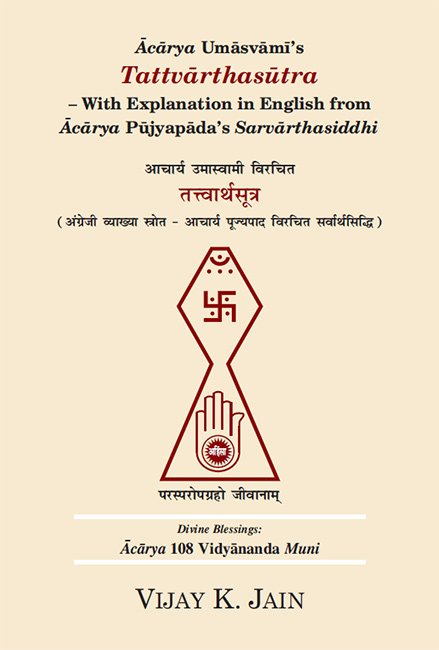Tattvartha Sutra (with commentary)
by Vijay K. Jain | 2018 | 130,587 words | ISBN-10: 8193272625 | ISBN-13: 9788193272626
This page describes lifetimes of deva from brahmaloka to acyuta kalpa which is verse 4.31 of the English translation of the Tattvartha Sutra which represents the essentials of Jainism and Jain dharma and deals with the basics on Karma, Cosmology, Ethics, Celestial beings and Liberation. The Tattvarthasutra is authorative among both Digambara and Shvetambara. This is verse 31 of the chapter The Celestial Beings and includes an extensive commentary.
Verse 4.31 - Lifetimes of Deva from Brahmaloka to Acyuta kalpa
Sanskrit text, Unicode transliteration and English translation of Tattvartha sūtra 4.31:
त्रिसप्तनवैकादशत्रयोदशपश्चदशभिरधिकानि तु ॥ ४.३१ ॥
trisaptanavaikādaśatrayodaśapaścadaśabhiradhikāni tu || 4.31 ||
From Brahma-Brahmottara to Lāntava-Kāpiṣṭha sets of kalpa the maximum lifetime of deva is more by three, seven, nine, eleven, thirteen and fifteen sāgaropama. (31)
Hindi Anvayarth:
अन्वयार्थ: पूर्व सूत्र में कहे हुए युगलों की आयु (सात सागर) से क्रमपूर्वक, तीन, सात, नव, ग्यारह, तेरह और पन्द्रह सागर अधिक आयु (उसके बाद के स्वर्गों में) है।
Anvayartha: purva sutra mem kahe hue yugalom ki ayu (sata sagara) se kramapurvaka, tina, sata, nava, gyaraha, teraha aura pandraha sagara adhika ayu (usake bada ke svargom mem) hai |
Explanation in English from Ācārya Pūjyapāda’s Sarvārthasiddhi:
The lifetimes of deva from Brahmaloka to Acyuta kalpa are indicated next.
From the previous sūtra, ‘seven’ is taken. It is added to three, etc. Three added to seven, seven added to seven, and so on. Similarly, these must be taken with sets of two kalpa. The word ‘tu’ is intended to indicate particularity. What particularity does it indicate? ‘A little over’ supplied from the previous sūtra (4-29) is taken only with the first four sets and not the last two. It is as follows. The lifetime of deva in Brahma-Brahmottara is a little over ten sāgaropama, in Lāntava-Kāpiṣṭha a little over fourteen sāgaropama, in Śukra-Mahaśukra a little over sixteen sagaropama, in Śatāra-Sahasrāra a little over eighteen sāgaropama, in Ānata-Prāṇata twenty sāgaropama, and in Āraṇa-Acyuta twenty-two sāgaropama.
